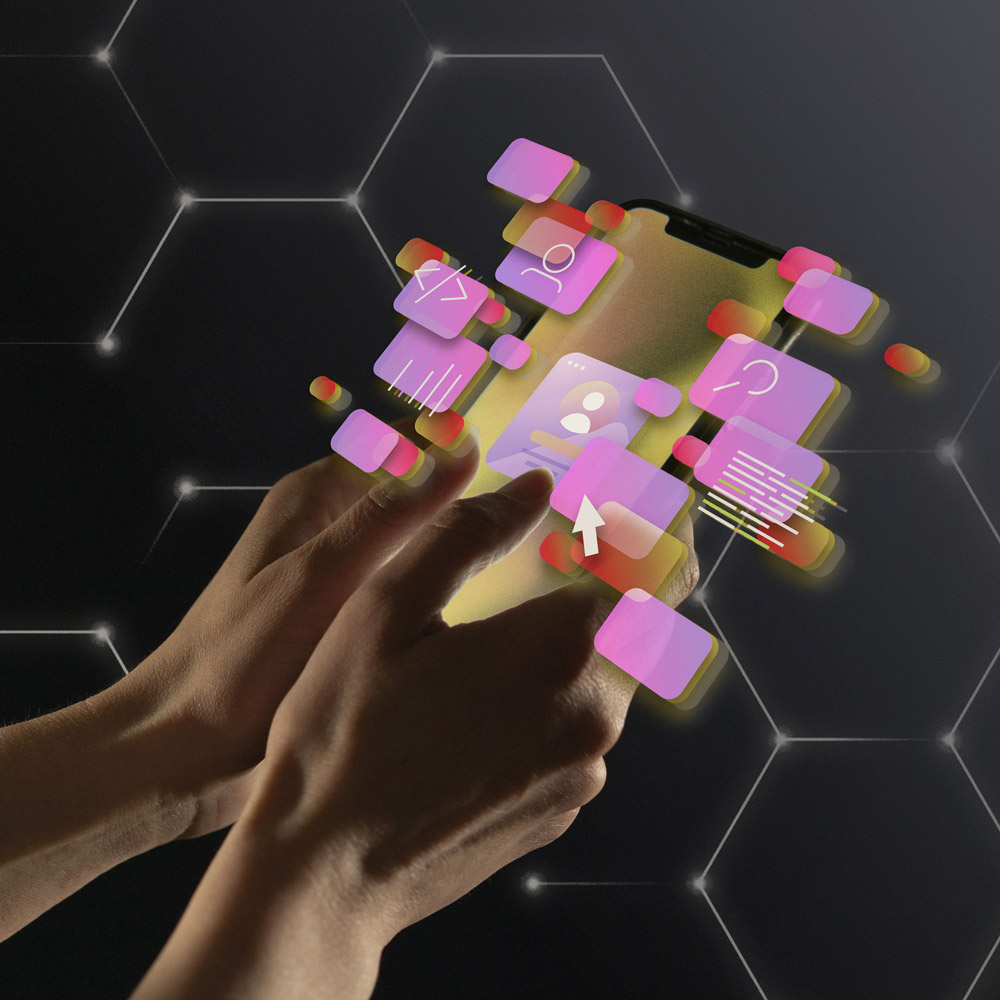Interaction Design:
Making Digital Feel Human
Do your digital interactions create emotional connections?
By focusing on smooth, intuitive interactions, we help create digital products that engage users and keep them coming back. Let’s work together to user interfaces for digital journeys that not only look good but feel effortless to use.
Why is Interaction Design important for product success?
Good interaction design makes navigating your website or app feel natural. Intuitive layouts and responsive elements guide users smoothly from one action to the next, reducing friction and enhancing the overall experience.
Engaging interactions keep users interested. By incorporating thoughtful micro-interactions like button animations or progress indicators you can create delightful moments that keep users coming back.
When interactions are seamless, users can achieve their goals quickly and efficiently. Whether it’s filling out a form or making a purchase, clear and familiar design patterns help users complete tasks with ease.
A well-designed product feels familiar even to first-time users. Interaction design minimizes the need for instructions by making features intuitive and easy to understand from the start.
In today’s crowded digital landscape, great interaction design gives your product a competitive edge. It’s the key to providing a user experience that not only works but also feels enjoyable.
Our approach to successful Interaction Design
Discovery and
Research
We start by studying your business goals, user needs, and market challenges to understand what your users want and how your product can meet those expectations. This lays the foundation for an intuitive, user-centered design.
Concept and Wireframe
We create wireframes to map out the structure and flow of your product. These blueprints focus on how users will interact with each feature, ensuring every step feels logical and seamless. It helps visualize the user journey and identify potential improvements.
Prototype and Testing
With prototypes, our design studio brings your interactions to life. We test them with real users to gather feedback and refine the design. This iterative process helps us optimize every interaction for ease of use and efficiency.
Design and Refinement
Our team carefully selects colors, typography, and other design elements that align with your brand for smooth and visually engaging interactions. We continuously iterate based on testing and feedback, refining the design until it’s perfect.
Develop and Implement
Our developers work closely with designers to bring the final design to life. We maintain a user-first approach, making sure the interactions remain intuitive and user-friendly across all devices.
Key Methods
User Research
Wireframing and Prototyping
Usability Testing
Responsive Design
Accessibility Testing
FAQs
Interaction Design focuses on creating smooth and engaging interactions between users and a product. It’s essential because it defines how users navigate and accomplish tasks, shaping their overall experience and satisfaction with the product.
Our approach starts with understanding the user’s behavior and needs. From there, we create wireframes and prototypes, focusing on intuitive interactions. We continuously test and refine the design to ensure it aligns with user expectations and provides a seamless experience.
The key principles include affordance, which indicates how to use a feature, feedback to acknowledge user actions, consistency to ensure uniformity, and simplicity to keep interactions straightforward. These principles help us create intuitive and engaging designs.
Good Interaction Design ensures that a product is easy to use and navigate. It simplifies the user journey by providing clear, intuitive interactions that reduce friction, enabling users to accomplish tasks with minimal effort.
Yes, engaging and intuitive interaction design can significantly boost user retention. When users have a smooth, enjoyable experience with a product, they’re more likely to keep using it, which directly contributes to the product’s long-term success.
